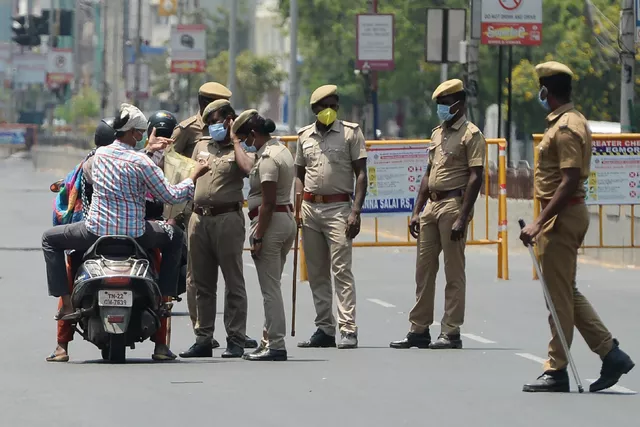Exploring the History of Indian Cuisine and its Connection to British Influence
The history of Indian cuisine is as vast and diverse as its culture. From its very beginnings, Indian cuisine has been heavily influenced by the surrounding regions and cultures, including the British. The British influence on Indian cuisine is one that has been felt for centuries, and has helped shape the flavors and recipes of Indian dishes today.It all began in the 1600s, when the East India Company established trading posts in India. The British began to bring new ingredients and flavors to the region, including tea, chutneys, and breads. They also introduced new cooking techniques such as roasting, boiling, and grilling. These new flavors and methods quickly began to take root in Indian cuisine, and over time, Indian cooks began to incorporate these new ingredients and techniques into their own cooking.
One of the most significant ways that the British influenced Indian cuisine was through the introduction of curry. Curry is a combination of spices and herbs such as cumin, coriander, ginger, and turmeric that is used to flavor a variety of Indian dishes. While curry had been around in India for centuries, it was the British who popularized it, and it soon became a staple of Indian cuisine.
Another way that the British influenced Indian cuisine was by introducing the concept of a “tiffin”. A tiffin is a type of meal that is eaten for breakfast, lunch, or dinner, and typically consists of several small dishes served with rice or bread. Tiffins are now a staple of Indian cuisine, and can be found in many restaurants and households throughout the country.
Finally, the British also introduced the concept of tea-time to India. Tea-time is a light meal served in the afternoon, and is typically accompanied by snacks such as biscuits and cakes. This is now a popular tradition in India, and is often enjoyed with family and friends.
The influence of the British on Indian cuisine cannot be understated. From introducing new ingredients and flavors to introducing new cooking techniques and concepts, the British played an integral role in shaping the flavors and recipes of Indian cuisine today.
An Overview of the British Culinary Impact on India
India is an ancient land with a rich and diverse culture, and its cuisine has been heavily influenced by many different influences over the centuries. One of the most significant has been the British. The British Raj brought with it a range of culinary influences that have shaped the Indian diet to this day.The British arrived in India in the late 1600s, and by the late 1700s had established direct rule over much of the country. During this period, they brought with them a range of ingredients, cooking styles, and recipes, many of which were unfamiliar to the locals. They also introduced new methods of food preparation, such as baking and roasting.
One of the most popular British dishes to have been adopted by Indians is the curry. Curries are now an integral part of Indian cuisine and are served with almost every meal. The British also introduced a range of new ingredients, such as potatoes and tomatoes, which have become staples in Indian kitchens.
The British also had a significant impact on the way food is served in India. The concept of 'afternoon tea' was introduced by the British, as was the practice of 'high tea', in which a full meal is served with tea. The practice of having 'dinner parties' was also popularized by the British, and this is still common in India today.
The British also introduced a range of cooking techniques, such as roasting, stewing, and baking, which are now commonly used in Indian cuisine. They also had a significant influence on the way Indian food is presented, with the introduction of more elaborate and European-style presentations.
The British influence on Indian cuisine is still evident today, and it is clear that their influence has had a lasting impact. The range of ingredients and cooking styles they introduced are still popular today, and their influence is evident in the way food is served in India.
Investigating the Traditional Indian Dishes Influenced by the British
The British have had a significant impact on Indian cuisines over the centuries. As the British colonized India and spread their culture, Indian cuisines began to absorb numerous British influences.The British had a major impact on traditional Indian dishes. For example, the popular dish of chicken tikka masala was actually created in the UK. This dish is said to have been invented by an Indian chef who wanted to make a dish that appealed to British customers. It is now a popular dish across the world.
Another traditional Indian dish that was influenced by the British is biryani. This dish is believed to have been created when the British introduced potatoes to India. Today, biryani is a beloved dish in India and is often served with a variety of meats and vegetables.
The British also had an influence on Indian desserts. One of the most popular desserts in India is gulab jamun, which was created by the British. This dish is made from dough balls that are deep-fried and then soaked in sugary syrup.
The British also introduced tea to India, which has become a staple beverage in the country. Tea is often accompanied by snacks such as samosas, which were also introduced by the British.
The British influence on Indian cuisines is undeniable. From introducing new ingredients and dishes to influencing traditional Indian dishes, the British have had a major impact on Indian cuisines. It is important to recognize the influence of the British in order to appreciate the diversity of Indian cuisines.
How the British Changed the Taste of Indian Cuisine
Indian cuisine has been shaped by many cultures, including the British. With the colonization of India by the British Empire in the 18th century, the Indian food scene was dramatically altered. The British brought with them a variety of ingredients and cooking techniques that were foreign to India, and the result was a fusion of Indian and British cuisine.The introduction of new ingredients such as potatoes, tomatoes, and corn, as well as dairy products such as milk and butter, had a major influence on Indian cooking. These ingredients were incorporated into traditional Indian recipes, and new dishes were created. For example, the popular dish of aloo gobi, which is a combination of potatoes and cauliflower, was invented during the British period.
In addition to new ingredients, the British also introduced new cooking methods. They popularized the use of Western-style cooking utensils, such as ovens and stoves, and taught Indian chefs how to use them. The British brought with them their own recipes, such as roasts and stews, which were adapted and incorporated into Indian cuisine.
The British also influenced the eating habits of Indians. They introduced the concept of dining in courses, with appetizers, soups, main courses, and desserts. For the first time, Indians began to eat breakfast and afternoon tea, which had been popular among the British.
The British influence on Indian cuisine has had a lasting impact. Today, Indian food is a unique fusion of ingredients and cooking techniques from both India and Britain. It is one of the most popular and beloved cuisines in the world, and the British influence is still evident in the dishes that are served.
Examining the Cultural Exchange between India and Britain through Food
Since the British colonization of India in the 18th century, Indian cuisine has been heavily influenced by British culture. This can be seen in the way that ingredients and dishes have been adapted to suit British tastes. The most obvious example is the widespread popularity of tea in India, which was introduced by the British in the 19th century.Tea is now a staple of Indian cuisine, with many varieties available in cafes and restaurants throughout the country. Curries, an integral part of Indian cuisine, have also been altered to suit British tastes. The most popular variation, known as ‘tikka masala’, is a British invention that adds tomato puree and cream to a traditional Indian curry.
The influence of British food on Indian cuisine can also be seen in the introduction of new ingredients. Potatoes, for example, were originally brought to India by the British, and are now a key ingredient in many Indian dishes. Similarly, the popularity of breads such as naan and chapati are thought to be a direct result of British influence.
The cultural exchange between India and Britain is not just limited to food. British influence has also been seen in music, architecture, and education. British-style education is still popular in India, and the English language is commonly spoken throughout the country.
In conclusion, the British have had a huge impact on Indian cuisine. Through the introduction of new ingredients, the adaptation of traditional dishes, and the popularization of tea, British culture has shaped Indian cuisine, creating a unique blend of flavors and influences.





